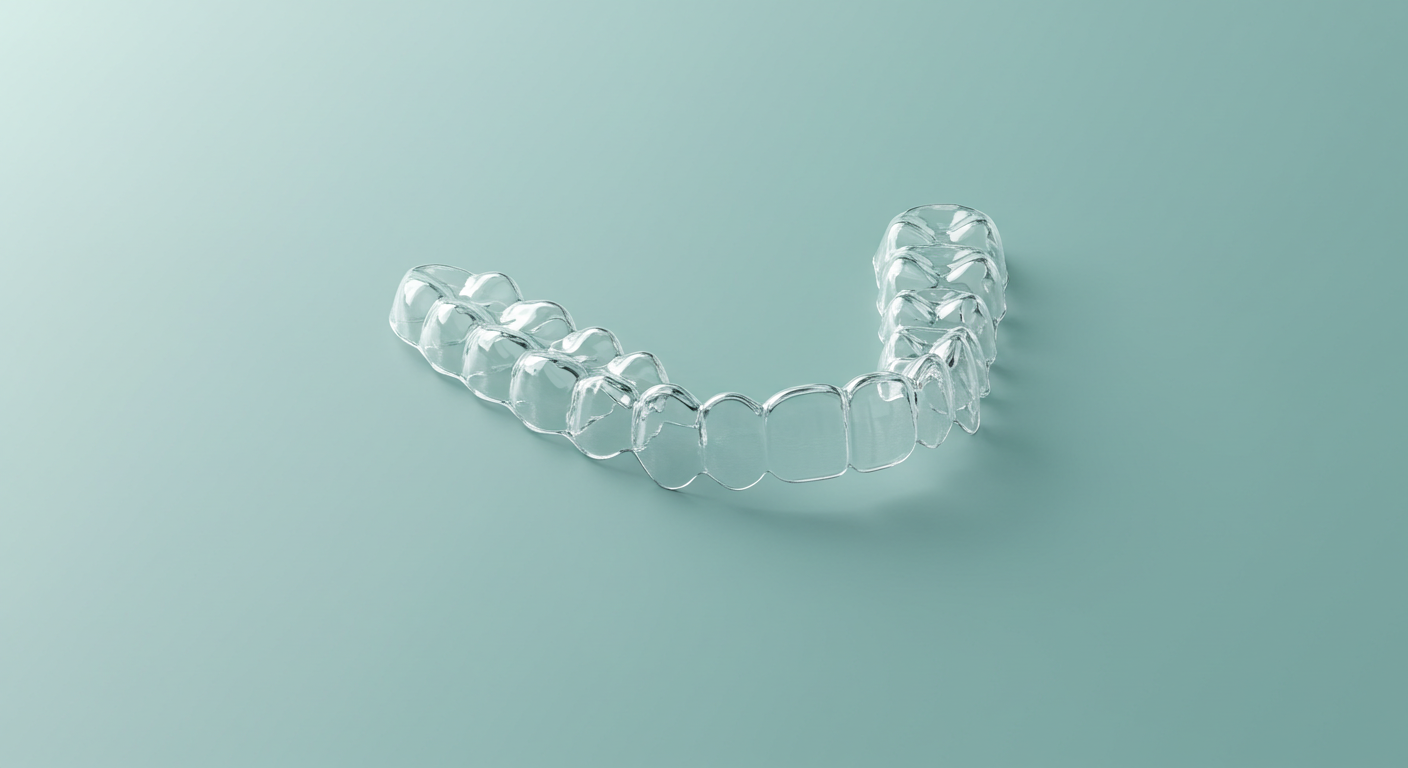Contents

Why Wear a Dental Tray at Night? Everything to Know About Bruxism
Bruxism, or teeth grinding, affects many more people than one might think. Often, patients don't realize they suffer from it unless a partner notices it at night. In this article, we guide you through the reasons for wearing a dental tray at night, its benefits, and how to use it effectively to protect your oral health.
Discover why wearing a night guard is essential for treating bruxism, preventing dental damage, and improving your quality of life.
What Is a Dental Tray Used For?
A dental tray is a removable appliance, often made of a soft or hard resin, designed to address certain dental problems. It resembles a clear aligner that is placed over the upper or lower teeth. Dentists typically prescribe an occlusal splint or night guard to treat bruxism, a disorder characterized by the often unconscious grinding or clenching of teeth.
The causes of bruxism can include:
- Sleep disorders: Such as sleep apnea or recurring nightmares.
- External factors: Excessive consumption of alcohol, tobacco, or drugs can worsen symptoms.
- Stress and anxiety: Accumulated tension during the day can manifest as nighttime grinding.
- Medications: Certain antidepressants or treatments can have side effects, including bruxism.
Bruxism isn't always noisy; it can be limited to silent clenching. However, its consequences can be severe: patients often wake up with tense jaws, headaches, or facial pain. In the long run, it can damage enamel, cause tooth fractures, or even affect the temporomandibular joints (TMJ). A night guard acts as a protective barrier, absorbing the forces of grinding and preventing these complications.
Why Wear a Dental Tray at Night?
At night, our subconscious takes over, making it impossible to consciously control jaw movements. Bruxism episodes often intensify during sleep, exacerbated by the day's accumulated stress, anxieties, or nightmares. That's why wearing a night guard is essential:
- It positions itself between the upper and lower teeth, acting as a cushion to reduce direct contact and prevent tooth wear.
- It allows for more restful sleep by minimizing pain related to grinding.
- It reduces the risk of long-term complications, such as tooth fractures or TMJ disorders.
During the day, bruxism is generally less intense, and it's easier to detect and release jaw clenching. Techniques like meditation, deep breathing, or relaxation exercises can help. However, in some severe cases, your dentist may recommend wearing the guard during the day as well. The practitioner will determine whether the guard should be worn on the upper or lower arch, based on your anatomy and specific needs.
What Are the Other Benefits of a Dental Tray?
Besides treating bruxism, a dental tray can have other uses:
- Discreet cosmetic correction: Some patients want to slightly straighten their teeth for aesthetic reasons but prefer to avoid visible appliances during the day. However, for effective alignment, an orthodontic tray must be worn at least 22 hours a day, making exclusive nighttime wear unsuitable for this purpose.
- General protection: It can also protect teeth during certain sports or in cases of grinding related to other neurological disorders.
However, its primary role remains to counteract bruxism, creating a virtuous cycle: better quality sleep reduces stress, thereby decreasing grinding episodes, even during the day.
How to Ensure Optimal Use of Your Night Guard
To maximize the effectiveness of your night guard, follow these tips:
- Custom-fit only: It is highly recommended to have your night guard custom-made by a dentist. Generic, over-the-counter guards can be ineffective or even worsen bruxism because they don't fit your unique dentition.
- Adaptation time: The first few nights might be uncomfortable, but persevere. Wear it every night throughout your sleep.
- Duration of use: The treatment can last for several years, depending on the severity of the bruxism. A night guard typically lasts between 1 to 3 years before wearing out. If you notice premature deterioration, consult your dentist.
- Rigorous maintenance: Clean your night guard every morning with a soft toothbrush and mild soap, or use special effervescent tablets. Store it in a dry, clean case to prevent bacteria growth.
When to Consult a Dentist for Bruxism
Wearing a night guard is not always enough. Regular visits to your dentist are essential to:
- Check for tooth wear and evaluate the effectiveness of the night guard.
- Adjust or replace the appliance if necessary.
- Identify other underlying causes, such as stress or sleep disorders, which may require a multidisciplinary approach (psychologist, sleep specialist).
Regular six-month or annual check-ups are important for maintaining optimal oral health, especially if you suffer from bruxism.
Conclusion
Wearing a night guard is an effective and non-invasive solution for treating bruxism, protecting your teeth, and improving your sleep quality. Whether it's to prevent tooth wear, reduce pain, or limit stress, this appliance plays a key role. If you suspect you grind your teeth, consult a dentist for an accurate diagnosis and a custom-made appliance. With rigorous hygiene and regular follow-up, you can preserve your smile and well-being for the long term!
FAQ
Is a dental tray uncomfortable?
Minor discomfort may occur during the first few nights, but it usually disappears with adaptation. Consult your dentist if the problem persists.
How much does a custom night guard cost?
The price for a custom-made night guard from a dentist typically ranges from $400 to $800. It is often considered a major restorative procedure and may be partially covered by dental insurance.
Can bruxism go away without a night guard?
In some mild cases, reducing stress or treating sleep disorders can help, but a night guard remains the most effective treatment for moderate to severe cases to prevent dental damage.
